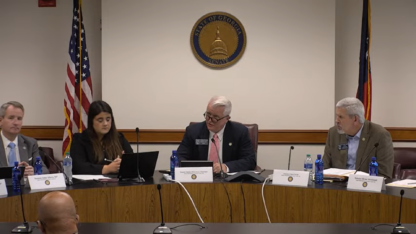Jekyll Island Officials Consider Responses To Erosion

Jekyll Island has an erosion problem. At the north end of the state-owned island, there’s a rock barrier that was built after Hurricane Dora to protect against erosion in the 1960s. The sandy beach in front of the barrier is already gone and waves pound away at land behind it.
“We’re seeing the island itself – behind the rocks – actually eroding back about five feet per year every year, and that’s a pretty good clip,” said Kevin Bodge, a coastal engineer at Olsen Associates. Earlier this week, he presented his research to Jekyll Island officials.
“Recently we’ve heard concern particularly from some of the owners of the properties on the north end of the island there,” said Ben Carswell, director of conservation for the Jekyll Island Authority.
“No buildings or anything are particularly in danger right now,” Bodge said. “We know for certain that they will be in the course of some years or the next decade.”
One option for addressing the erosion, he said, would be to repair the rock barrier. Another more ambitious approach would be to bring in sand and recreate the beach. The cost would range from $1 million to around $15 million.
“A lot of the erosion effects we’re seeing up there are man-induced, not necessarily natural,” said Bodge. He said the problem has been exacerbated by dredging just north of Jekyll, for Brunswick harbor, and by the rock barrier itself.
“When you come to issues like beach nourishment and shore protection, there become very interesting questions with Jekyll Island,” said Bodge. “You want to do the most you can to conserve the natural resources, but noting that you’re having to do so in an environment that’s really been shaped by man.”
The Jekyll Island board is considering next steps.
9(MDAxODM0MDY4MDEyMTY4NDA3MzI3YjkzMw004))






